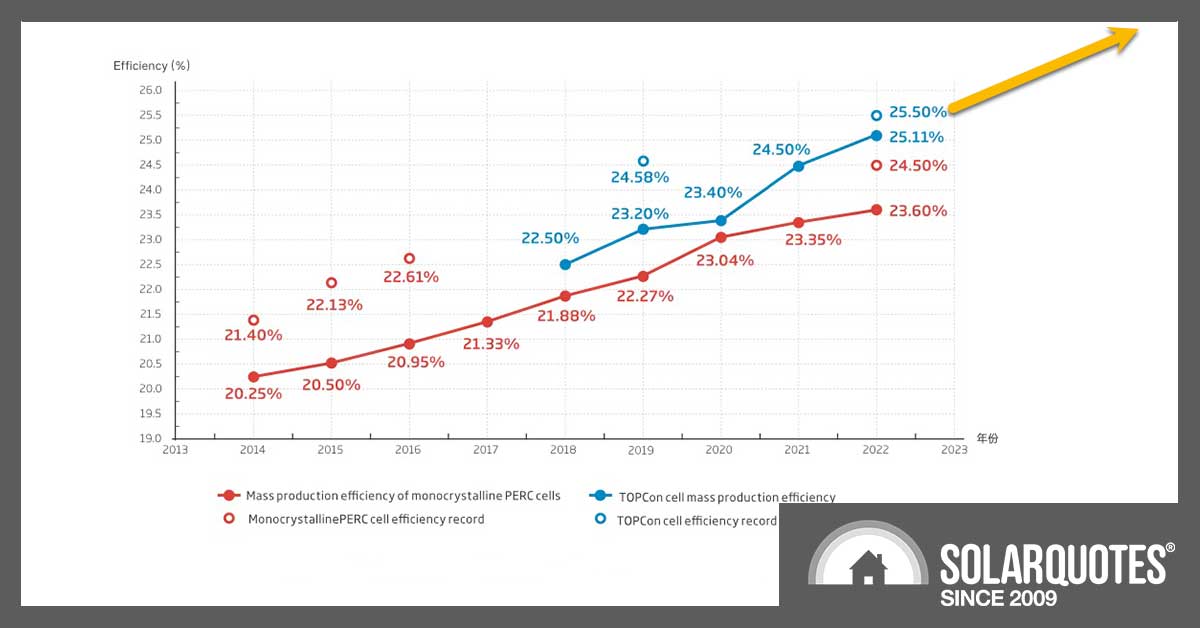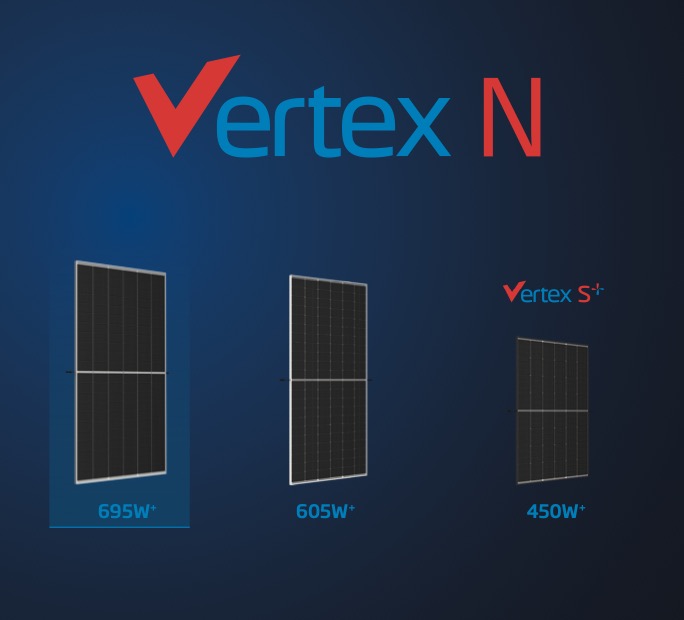
This is interesting: not just a new module technology from Trina Solar, but one with a pathway to 30% cell efficiency.
Trina revealed the new “n-type i-TOPCon” technology at the Shanghai International Solar Photovoltaic Power Generation and Smart Energy Conference and Exhibition in late May.
In its media release, Trina said that next year, it will use the new technology to upgrade its Vertex series solar panels.
Vertex N Solar Panels
The technology will be used in the ‘Vertex N’ family of solar panels with three power classes for different applications:
- Residential Rooftops: up to 450W (Called Vertex S+, but confusingly still listed as part of the Vertex N family)
- Commercial Rooftops: 605W
- Solar Farms: 695W (with 700W on its way)
Trina’s Solar Panel Efficiency: Up to 22.2%
It is important to note that solar cell efficiency is always higher than solar panel efficiency. There are physical gaps between the cells and extra losses in the assembled panel. Trina’s 25.5% cell efficiency translates to a best-case panel efficiency of 22.2% in its highest-powered Vertex N panel.
That’s just behind a Jinko Tiger 440W panel’s efficiency and equal to the panel efficiency of the expensive Sunpower Maxeon 5.
Tip: See what Australian homeowners think of their Trina panels with our Trina Solar Panel Reviews and compare solar panels’ efficiencies with our Solar Panel Comparison Tool
What is “n-type i-TOPCon” solar technology?
The core technologies behind Trina’s new tech are:
- PECVD Poly technology: uses Plasma Enhanced Chemical Vapor Deposition to create a thin layer on a solar cell that reduces energy loss and improves the efficiency of converting sunlight into electricity.
- Boron selective emitter SE technology uses lasers to enhance specific solar cell areas to reduce energy loss and improve efficiency. It also minimizes heat damage to the cell, which helps maintain its structure and further improve efficiency.
- High-efficiency hydrogen passivation technology: uses hydrogen to alter specific properties in a solar cell and repair defects. This improves the cell’s ability to hold onto electrical charge carriers for longer, thereby increasing the cell’s efficiency at converting sunlight into electricity.
Trina claims the advantages of this tech, apart from better cell efficiency, include:
- Reduced degradation over time
- Reduced Light and Elevated Temperature Induced-Degradation (LeTID) – leading to fewer early failures – especially in hot climates with strong sunlight. Handy for Australia.
- Improved temperature coefficient: -0.30%/ºC compared to -0.34%/ºC. A solar panel’s performance reduces on hot days. This means you lose less energy on those days. This video from Finn explains the effect:
Solar Cell Efficiency Expected To Hit 30%
Trina has high hopes for cell efficiency going forward:
“In the future, with the application of front-side full passivation contact cell technology, the mass production efficiency of Trina Solar’s n-type cells with i-TOPCon Ultra technology is forecast to exceed 27%. Furthermore, with the implementation of i-TOPCon tandem technology, cell efficiency is forecast to surpass 30%.”
If Trina can reach a 30% cell efficiency, expect residential-sized Trina panels pushing 500W, commercial-sized panels pushing 700W and solar-farm-sized panels close to 800W, bringing the per-kWh cost of solar energy even lower.
If you are thinking of Trina solar panels for your project, they were recently voted Australia’s best-value solar panels in our 2023 installer survey and made the podium for best Australian customer support.


 RSS - Posts
RSS - Posts



Sure, great efficiency and all, but will those panels be coming to Australia or is this just another marketing spin?